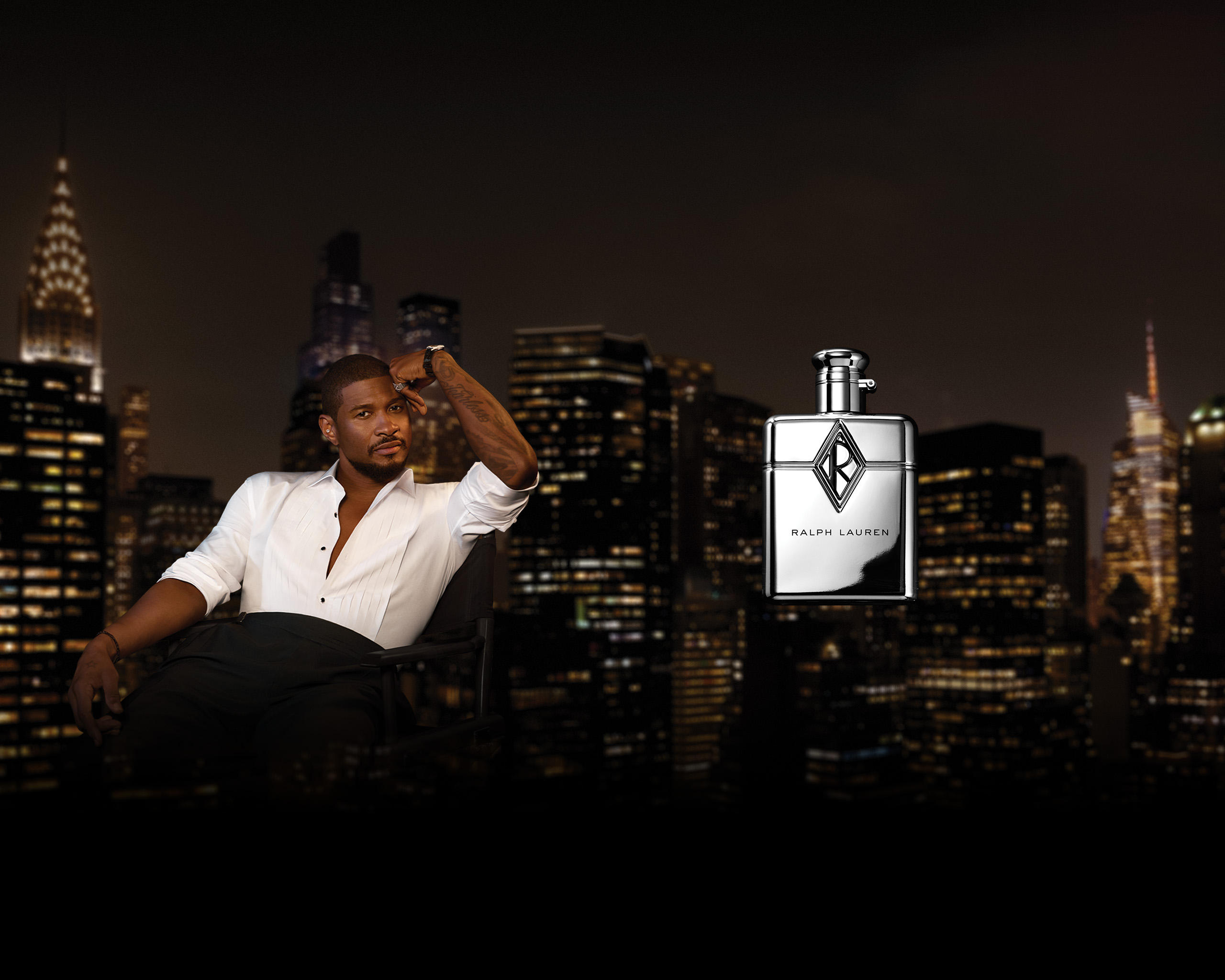One of the most remarkable things about the LVMH Prize is that nothing is asked of the winners by LVMH—they want nothing in return. That Moët Hennessy Louis Vuitton, the biggest luxury goods conglomerate in the world, with its base of global operations in the historic fashion capital of Paris, simply wants to help young designers from all over the world by recognizing their talent is seen as something of a curve ball. There is no secret ‘hot housing’ scheme to find seedling designers that can be covertly planted at the leviathan luxury group at a later date; there is no requested hand-over of work that the group might find profitable to exploit—and there is certainly no nefarious mimicking of that work; there is no national bias for the choosing of winners with a potential for French flag-waving—the two main prize winners in the two years the competition has been running are Canadian and Portuguese respectively, with both labels based in and staging fashion shows in London. Instead—and this is perhaps so shocking in its straightforwardness—there is simply a desire that the winners do well with their fashion labels, no matter where that might take them.
Above The Fold

Sam Contis Studies Male Seclusion

Slava Mogutin: “I Transgress, Therefore I Am”

The Present Past: Backstage New York Fashion Week Men’s Spring/Summer 2018

Pierre Bergé Has Died At 86

Falls the Shadow: Maria Grazia Chiuri Designs for Works & Process

An Olfactory Memory Inspires Jason Wu’s First Fragrance

Brave New Wonders: A Preview of the Inaugural Edition of “Close”

Georgia Hilmer’s Fashion Month, Part One

Modelogue: Georgia Hilmer’s Fashion Month, Part Two

Surf League by Thom Browne

Nick Hornby: Grand Narratives and Little Anecdotes

The New Helmut

Designer Turned Artist Jean-Charles de Castelbajac is the Pope of Pop

Splendid Reverie: Backstage Paris Haute Couture Fall/Winter 2017
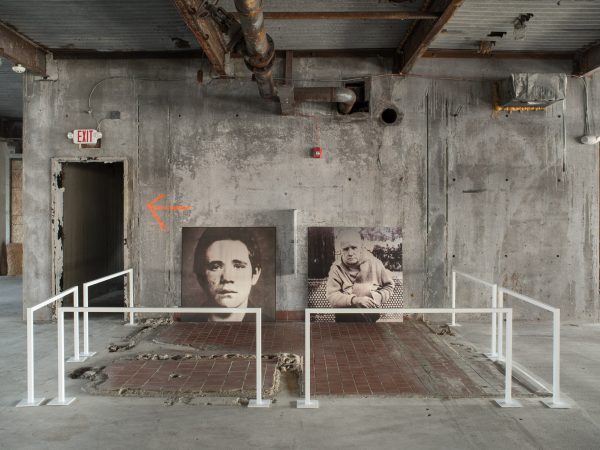
Tom Burr Cultivates Space at Marcel Breuer’s Pirelli Tire Building

Ludovic de Saint Sernin Debuts Eponymous Collection in Paris

Peaceful Sedition: Backstage Paris Fashion Week Men’s Spring/Summer 2018
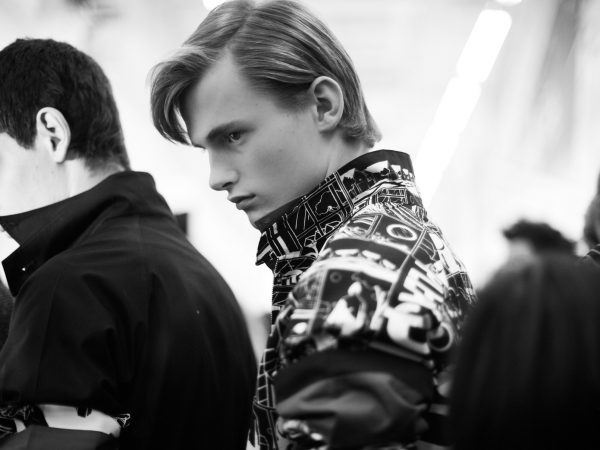
Ephemeral Relief: Backstage Milan Fashion Week Men’s Spring/Summer 2018

Olivier Saillard Challenges the Concept of a Museum

“Not Yours”: A New Film by Document and Diane Russo

Introducing: Kozaburo, 2017 LVMH Prize Finalist

Introducing: Marine Serre, 2017 LVMH Prize Finalist

Conscious Skin

Escapism Revived: Backstage London Fashion Week Men’s Spring/Summer 2018

Introducing: Cecilie Bahnsen, 2017 LVMH Prize Finalist

Introducing: Ambush, 2017 LVMH Prize Finalist

New Artifacts

Introducing: Nabil Nayal, 2017 LVMH Prize Finalist

Bringing the House Down

Introducing: Molly Goddard, 2017 LVMH Prize Finalist

Introducing: Atlein, 2017 LVMH Prize Finalist

Introducing: Jahnkoy, 2017 LVMH Prize Finalist

LVMH’s Final Eight

Escaping Reality: A Tour Through the 57th Venice Biennale with Patrik Ervell

Adorned and Subverted: Backstage MB Fashion Week Tbilisi Autumn/Winter 2017

The Geometry of Sound

Klaus Biesenbach Uncovers Papo Colo’s Artistic Legacy in Puerto Rico’s Rainforest

Westward Bound: Backstage Dior Resort 2018

Artist Francesco Vezzoli Uncovers the Radical Images of Lisetta Carmi with MoMA’s Roxana Marcoci

A Weekend in Berlin

Centered Rhyme by Elaine Lustig Cohen and Hermès

How to Proceed: “fashion after Fashion”

Robin Broadbent’s Inanimate Portraits

“Speak Easy”

Revelations of Truth

Re-Realizing the American Dream

Tomihiro Kono’s Hair Sculpting Process

The Art of Craft in the 21st Century

Strength and Rebellion: Backstage Seoul Fashion Week Autumn/Winter 2017

Decorative Growth
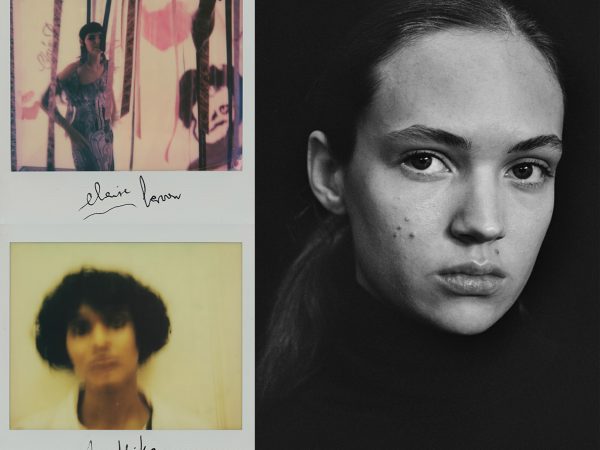
The Faces of London

Document Turns Five

Synthesized Chaos: “Scholomance” by Nico Vascellari

A Whole New World for Janette Beckman

New Ceremony: Backstage Paris Fashion Week Autumn/Winter 2017
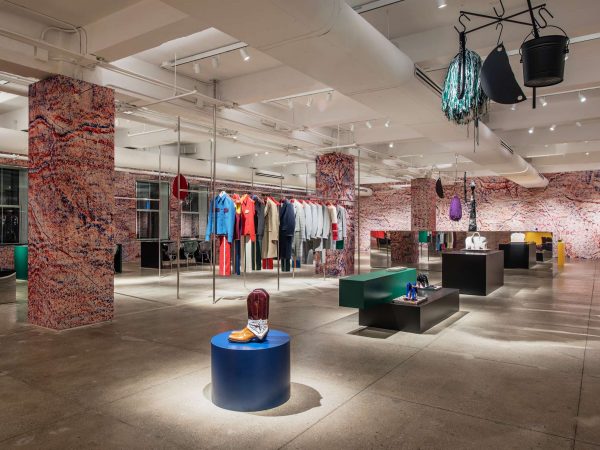
New Perspectives on an American Classic

Realized Attraction: Backstage Milan Fashion Week Autumn/Winter 2017

Dematerialization: “Escape Attempts” at Shulamit Nazarian

“XOXO” by Jesse Mockrin

Brilliant Light: Backstage London Fashion Week Autumn/Winter 2017

The Form Challenged: Backstage New York Fashion Week Autumn/Winter 2017

Art for Tomorrow: Istanbul’74 Crafts Postcards for Project Lift

Inspiration & Progress

Paskal’s Theory of Design

On the Road

In Taiwan, American Designer Daniel DuGoff Finds Revelation

The Kit To Fixing Fashion
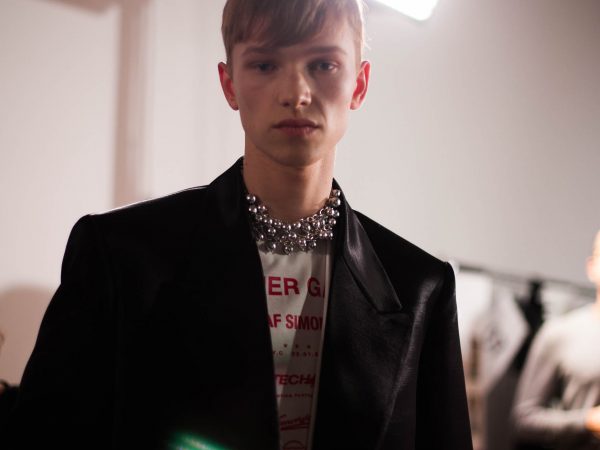
The Game Has Changed: Backstage New York Fashion Week Men’s Autumn/Winter 2017

Class is in Session: Andres Serrano at The School

Forma Originale: Burberry Previews February 2017

“Theoria”

Wearing Wanderlust: Waris Ahluwalia x The Kooples

Approaching Splendor: Backstage Paris Haute Couture Spring/Summer 2017

In Florence, History Returns Onstage

An Island Aesthetic: Loewe Travels to Ibiza

Wilfried Lantoine Takes His Collection to the Dancefloor

A Return To Form: Backstage New York Fashion Week Spring/Summer 2018

20 Years of Jeremy Scott

Offline in Cuba

Distortion of the Everyday at Faustine Steinmetz

Archetypes Redefined: Backstage London Fashion Week Spring/Summer 2018

Spring/Summer 2018 Through the Lens of Designer Erdem Moralıoğlu

A Week of Icons: Backstage Milan Fashion Week Spring/Summer 2018

Toasting the New Edition of Document

Embodying Rick Owens

Prada Channels the Wonder Women Illustrators of the 1940s

Andre Walker’s Collection 30 Years in the Making

Fallen From Grace, An Exclusive Look at Item Idem’s “NUII”

Breaking the System: Backstage Paris Fashion Week Men’s Autumn/Winter 2017

A Modern Manufactory at Mykita Studio

A Wanted Gleam: Backstage Milan Fashion Week Men’s Autumn/Winter 2017

Fashion’s Next, Cottweiler and Gabriela Hearst Take International Woolmark Prize

Beauty in Disorder: Backstage London Fashion Week Men’s Autumn/Winter 2017

“Dior by Mats Gustafson”

Prada’s Power

George Michael’s Epochal Supermodel Lip Sync

The Search for the Spirit of Miss General Idea

A Trace of the Real

Wear and Sniff

Underwater, Doug Aitken Returns to the Real
Thomas Tait, the young Canadian designer and main winner of the inaugural award in 2014, explains: “I had lunch with Delphine Arnault after the announcement that Marques’Almeida was the recipient this year—I had been asked to attend the announcement in Paris too. When I saw Delphine she told me that I wasn’t to think that LVMH would ‘abandon me’, that they would be there for me to call on regardless. I then kind of just came out with it, saying ‘But what do you want from me in all of this?’ And all she said was, ‘For you to be successful and do well in your career.’ That’s it?! I thought that was sort of incredible.” And as Thomas Tait had been given 300,000 euros, as well as dedicated guidance, support, and introduction to manufacturers and producers through the group’s mentorship over that past year—and had his profile elevated immeasurably because of this win—it could indeed be seen as rather an incredible thing.

The instigator and driving force behind the LVMH Prize is the said Delphine Arnault—she is also one of the main reasons there is both an idealistic, instinctive, and beneficent way of thinking behind it. As Director and Executive Vice President of Louis Vuitton, both the powerhouse and jewel in the crown of LVMH, Delphine Arnault is more than au fait with the business of fashion. Besides this role that began in 2013, she has served on the LVMH Management Board since 2003. She is the first woman and the youngest person ever to do so—she was 28 years old at the time of her appointment, and had been working generally within the business structure of LVMH since three years before that. But besides her business chops, what makes Delphine Arnault particularly attuned to the role of mentor to fledgling designers is something a bit more instinctive and human in her make up: she has a simple appreciation, enthusiasm, and respect for creative people and the creative process. And this is something far more rare in the business side of fashion than might at first be thought.
“When you are an entrepreneur working in a big company you also have to be creative in finding solutions to a lot of problems. But when you see really creative people doing things with their hands and with their minds, this is something so impressive and it is with them that we create all of the beautiful products, of course.”
This side of Delphine Arnault really came to my attention when working on a project for Louis Vuitton. It soon became clear that her unwavering enthusiasm for the creative people involved in The Icon And The Iconoclasts Monogram collection had persuaded many of them to be a part of the project in the first place. It certainly was the case for the preeminent architect of our age, Frank Gehry, who, quite frankly, can choose to do whatever the hell he pleases. And despite being rather busy with the completion of the Fondation Louis Vuitton, he still found time to design a handbag—and he really was extensively and almost crazily involved in this handbag, he even imagined what it would be like to sit inside the bag to design the interior. When asked why he was persuaded to venture into such unknown bag territory, he simply replied, “Because I love Delphine.” And this appreciation is a two-way street. When I asked Delphine Arnault why she wanted Frank Gehry involved, she said, “He is so remarkable and special. In a different life I would like to work for Frank Gehry.” And do note, she said ‘for’ not ‘with’—I had never heard somebody in quite such a powerful business position in the fashion industry be so genuinely modest. This is something I remind her of when we talk about the LVMH Prize, in Paris in the run-up to the Fall/Winter 2015 haute couture shows.
“I love Karl as well!” she laughs. “In fact I love all of them, Cindy and Rei are so impressive too…. This was one of my first projects working at Vuitton.” Of course Delphine Arnault is talking about Lagerfeld, Sherman, and Kawakubo respectively, all contributing original work for The Icon and The Iconoclasts project. She continues:
“It is quite fascinating to see people who are so gifted in action, to work with Frank or Karl or Nicolas. I know I am so lucky to be able to work with people like this. When you are an entrepreneur working in a big company, you also have to be creative in finding solutions to a lot of problems. But when you see really creative people doing things with their hands and with their minds, this is something so impressive and it is with them that we create all of the beautiful products of course.”
Such an attitude of respect has stood her in good stead for the LVMH Prize, as it is as much about trusting the judgement of the stellar designers employed at the LVMH group as anything else.
“I had had the idea to create the prize for a couple of years—I was still working at Dior at the time,” explains Arnault, who had previously been Deputy Managing Director at Christian Dior between 2008–2013. “I discussed it with Raf, who pointed out all of the amazing talent that we have here at the group, that we have the best designers in the world; we thought that they should be part of the jury finding the designers of tomorrow. It is such a good idea but nobody had done it before.”
This year Raf Simons, Marc Jacobs, Nicolas Ghesquière, Phoebe Philo, Ricardo Tisci, Humberto Leon and Carol Lim, Jonathan Anderson and, last but not least, Karl Lagerfeld himself, went to make up most of the epic (and rather terrifying) final jury that the short listed contestants of the prize have to face. Here, their final presentation is made and it is something of a nerve-wracking experience.
“I have to say that room is very impressive,” laughs Arnault. “Each time I see the young ones that are being interviewed, you feel the pressure on them; how they really look up to the people who are doing the interviewing, that they have to present to their heroes. It is an amazing opportunity but at the same time there are a lot of emotions; there is a lot of stress for them.” She then adds, quite significantly, and proving that she certainly is no pushover: “But of course as a fashion designer you have to go through a lot of stress. You have to create amazing ready-to-wear with a great personality to it, but you also have to be able to express it and to speak to the press and in turn the world! That is also part of your job.”
The opportunity of talking to and receiving the views and opinions of many of the preeminent designers at work today was certainly a pull for Marques’Almeida’s Marta Marques and Paolo Almeida to enter the prize once again this year. “People were shocked we entered it again,” says Marta Marques. “But we saw it as a really good opportunity to show our work to people we admire. We did not think beyond that. We just thought, this being the second time, we’d see everyone again!” She continues:
“The designers were all very nice—while we tried to be as normal as we could. And they all stressed the abnormality of this situation for them too. One of the things that Phoebe said was that they were looking for passion, for something from the gut. Karl was very insightful—he thought there was something in us being Portuguese and seeing things in a fresh way. We gave everyone a booklet of images, pictures that are important to us and say something about us. Raf and Marc went through it and said it felt like we were doing something in a very authentic way. That was incredible for us, it was so important to have this feedback.”

Of course Marques’Almeida went on to win the prize this year. “It was much more about the honesty, the work and how our minds worked,” says Marques. “It was much more about this rather than numbers and figures related to our business.”
As to why there is such an idealistic approach to the LVMH Prize, Delphine Arnault answers simply, “We think as a leader of our industry it is our responsibility to find the talent and help them grow.” It is also a truly global way of thinking that stresses an ease of entry and a democracy in its approach. “That is why the prize is open to anybody around the world, providing they have made two collections and they are under 40,” says Arnault. “They can be based anywhere, there are no restrictions about the country a designer lives in or the city they show in, and it is really easy to apply on the internet. People can also apply again; the prize is also about rewarding progress. It really is to help without asking anything in exchange; it was an idea of giving back a little bit. After all, the designers give so much to us.”
As she then astutely points out, “The concept of a prize or contest, it is how Karl Lagerfeld started anyway. It was the prize he won with Saint Laurent.” The International Wool Secretariat Prize that both designers won in 1954—Lagerfeld for best coat and Saint Laurent for best dress—brought to attention the designers who essentially shaped the fashion world we live in today. The LVMH Prize might well have a hand in shaping the fashion world we live in tomorrow.

















